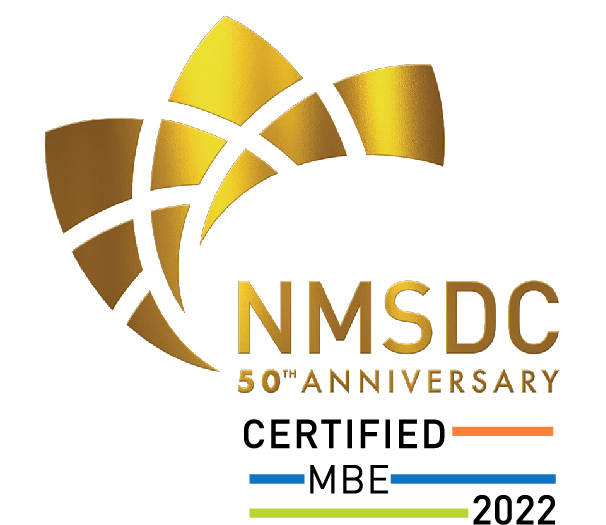E-discovery is an essential component of most employment-related lawsuits. Modern technology and communication tools have substantially increased the volume of electronically stored information (ESI) in the workplace. Most employment disputes, including claims involving discrimination, harassment, retaliation, and breaches of restrictive covenants, are fact intensive, further increasing the relevance of email and other electronic communications.
The high volume of ESI in the workplace has drastically increased the costs and burden for employers litigating employment disputes. However, the effective use of ESI can sometimes strengthen an employer’s case or defenses. For example, emails, text messages, or other ESI can be used as evidence to demonstrate, among other things, that an employee had notice of a certain policy or procedure or engaged in wrongdoing.
This article examines e-discovery issues in employment litigation from an employer’s perspective, including:
– Proportionality and cost-shifting considerations in employment litigation under the Federal Rules of Civil
Procedure (FRCP).
– The employer’s document preservation obligations.
– The initial meet and confer obligation.
– Sanctions for spoliation of evidence.
– The implications of workplace BYOD practices.
– The benefits and challenges of ephemeral messaging apps.
Proportionality in Employment Litigation
When litigating employment disputes, employers typically control most of the discoverable evidence, including ESI. For example, employees often seek discovery of various types of ESI from employers, including:
– Emails received by or sent from employees and co-workers, supervisors, or other witnesses.
– Electronic calendars and meeting notices.
– Documents or other information stored on employees’ or witnesses’:
company-issued or personal hard drives, tablets, and other devices; and
flash drives, thumb drives, and CDs.
– Documents stored on corporate shared drives or in joint workspaces or cloud storage accounts.
– Mobile communications between witnesses or employees, including:
text messages; and instant messages.
– Recordings of voicemails or telephone conversations.
– Communications generated and stored in workplace collaboration tools or ephemeral messaging applications (apps),
and all associated data and metadata (see Ephemeral Messaging below).
– Internet traffic history.
– Company intranet posts, social media activity, or other online content.
– Current and historic copies of employee handbooks and other policies.
– Personnel databases (for example, databases of employees’ races, ethnicities, gender, or other protected
classes).
– Payroll records, time sheets, and other forms of attendance records, including building access history.
– Applicable reports or other information relevant to an employee’s specific duties or job performance.
– Information about other similarly situated employees.
– Information about the employer’s involvement in past employment discrimination claims, charges, or settlements
with other employees.
By contrast, employees who are parties to employment disputes typically have limited discoverable ESI because most of their relevant email and electronic files reside on the employer’s servers. The disproportionality is often more apparent in certain class action lawsuits challenging an employer’s workplace policies or practices (see, for example, Lawson v. Love’s Travel Stops & Country Stores, Inc., 2019 WL 5622453, at *4 (M.D. Pa. Oct. 31, 2019) (noting the parties’ concerns regarding the asymmetries in ESI discovery relating to the Fair Labor Standards Act misclassification class action at issue)).
Because of this data imbalance, employers often expend substantially more time and resources responding to requests for the production of documents than their adversaries. The costs of collecting and producing ESI can be high compared to the potential damages at issue, especially in single plaintiff discrimination cases, even if the scope of discovery is relatively narrow.
Although proportionality is not a new concept to discovery or the federal rules, disproportionality can change the litigation dynamic in employment litigation cases by:
– Reducing incentives for plaintiff-employees to cooperate in discovery by, for example, limiting the scope of
production.
– Creating the potential for more discovery disputes and, therefore, additional costs.
– Incentivizing early settlement for the employer, even in cases that lack merit (for a collection of resources to
help employers, employees, and their respective counsel settle employment-related claims, see Settling Employment
Disputes Toolkit on Practical Law).
Proportionality Under the FRCP
FRCP 26 defines the scope and limits of discovery in federal civil litigation, including employment litigation. The 2015 amendments to FRCP 26(b)(1) altered the scope of allowable discovery by elevating the concept of proportionality and striking the “reasonably calculated to lead to the discovery of admissible evidence” language from the previous version of the rule.
FRCP 26(b)(1) generally permits parties to obtain discovery of non-privileged information that is both:
– Relevant to any party’s claim or defense (formerly “relevant to the subject matter” of the action).
– Proportional to the needs of the case, considering:
– the importance of the issues at stake in the action;
– the amount in controversy;
– the parties’ relative access to relevant information;
– the parties’ resources;
– the importance of the discovery in resolving the issues;
– and whether the burden or expense of the proposed discovery outweighs its likely benefit. (FRCP 26(b)(1); see
also Lamaute v. Power, 339 F.R.D. 29, 35-38, 42 (D.D.C. 2021) (narrowing the scope of certain document requests
after conducting a detailed proportionality analysis); Osucha v. Alden State Bank, 2019 WL 6783289, at *4-5
(W.D.N.Y. Dec. 12, 2019) (conducting a detailed proportionality analysis and concluding that the production of
personnel records from non-party co-workers was disproportional to the needs of the case, except for records of
those individuals the plaintiff alleged were harassed); Gramercy Grp., Inc. v. D.A. Builders, LLC, 2017 WL
5230925, at *1 (D. Haw. Nov. 9, 2017).)
FRCP 26 also specifically addresses e-discovery. Under FRCP 26(b)(2), a party is not required to produce ESI if the information is not reasonably accessible because of either undue burden or cost. To show inaccessibility, an employer must provide admissible evidence about the nature and quantity of the undue burden (see, for example, ZooBuh, Inc. v. Better Broad., LLC, 2017 WL 1476135, at *4-5 (D. Utah Apr. 24, 2017) (holding that the defendant failed to quantify how much responsive material was in its possession and therefore did not establish undue burden); Fish v. Kobach, 2016 WL 893787, at *1 (D. Kan. Mar. 8, 2016) (requiring employers to support undue burden objections with evidentiary proof)).
Even if the party from which discovery is being sought makes a showing of inaccessibility, the court may still:
– Order discovery of the requested ESI if the requesting party shows good cause, considering the limits of FRCP
26(b)(2)(C).
– Specify conditions for the discovery. (FRCP 26(b)(2)(B).)
Proportionality Challenges to Employees’ Discovery Requests
The 2015 amendment’s emphasis on the importance of proportional discovery has given employers another avenue for challenging overly broad or burdensome discovery requests (Albritton v. CVS Caremark Corp., 2016 WL 3580790, at *4 (W.D. Ky. June 28, 2016) (stating that proportionality is “the touchstone of the revised Rule 26(b)(1)’s scope of discovery provisions”); Vaigasi v. Solow Mgmt. Corp., 2016 WL 616386, at *13 (S.D.N.Y. Feb. 16, 2016) (noting that proportionality “has become ‘the new black’”); but see McKey v. U.S. Bank Nat’l Ass’n, 2018 WL 3344239, at *2 (D. Minn. July 9, 2018) (stating that the concept of proportionality has been “enshrined within 26(b)” since the 1983 amendments)).
Courts may balance the need for discovery against whether discovery production has reached a point of diminishing returns or has only marginal utility (see, for example, Abbott v. Wyo. Cty. Sheriff’s Off., 2017 WL 2115381, at *2 (W.D.N.Y. May 16, 2017)). Employers have had some success in arguing that document requests are disproportional to the needs of the case. Courts have applied proportionality considerations to, for example:
– Deny a plaintiff’s motion to compel responses to 1,027 requests in a second request for production, after the
defendant had produced approximately 1,000 pages in response to the plaintiff’s first document request, because
the second request was, among other things, disproportional to the needs of the case (Vaigasi, 2016 WL 616386, at
*15).
– Deny a plaintiff’s request for company-wide information regarding matters irrelevant to the plaintiff’s claims of
gender and disability discrimination, including:
– the employees’ race, ages, and coverage under pension plans or 401(k) plans;
– a complete list of all of the defendant’s employees during the past three years and all employees discharged by
the defendant during the past three years, including their names, salaries, job titles, job descriptions,
performance evaluations, and education levels; and
– – all company-wide job openings after the plaintiff’s departure (Jackson v. Catholic Charities of the Archdiocese
of Omaha, Inc., 2016 WL 4074143, at *2 (D. Ne. July 29, 2016)).
– Deny a plaintiff’s request for information seeking “every type of document involved in the employment
relationship” from the defendants, who had produced more than 500 pages of documents (Black v. Buffalo Meat
Serv., Inc., 2016 WL 4363506, at *6 (W.D.N.Y. Aug. 16, 2016); but see Kennicott v. Sandia Corp., 327 F.R.D. 454,
471-74 (D.N.M. 2018) (in a pay discrimination class action, allowing the plaintiffs’ discovery of complaints
filed by the defendant’s female employees asserting pregnancy discrimination, sexual harassment, gender-based
hostile work environment, and retaliation)).
– Limit discovery to a particular region or worksite (see, for example, Razo v. Timec Co., 2016 WL 1598601, at *3
(N.D. Cal. Apr. 21, 2016)).
– Limit discovery to the defendant only and deny discovery of its parent company or other affiliated entities
(Frieri v. Sysco Corp., 2017 WL 2908777, at *3 (S.D. Cal. July 7, 2017)).
– Deny a plaintiff’s request for all complaints and charges of discrimination filed against the defendant during
the last five years (Stancu v. Hyatt Corp./Hyatt Regency, Dallas, 2018 WL 888909, at *5 (N.D. Tex. Feb. 14, 2018)
(noting the limited relevance of “pattern or practice” evidence in a single plaintiff discrimination case)).
– Deny a pro se plaintiff’s request for information about all employee requests for accommodation under the
Americans with Disabilities Act from 2014 to 2020 (Cannon v. Charter Commc’ns, 2021 WL 600953, at *4 (W.D.N.C.
Feb. 16, 2021)).
State laws and procedural rules in some states, including Utah, Minnesota, and Illinois, similarly emphasize proportionality in discovery and ease the production burden on employers (for example, Utah R. Civ. P. 26(b)(1) and (2); Minn. R. Civ. P. 1; Ill. S. Ct. R. 201(a) and (c)(3)). Counsel should check the local rules to determine whether proportionality principles can help defend against overly burdensome discovery production requests. (For more on how counsel can assert and respond to proportionality-based objections, see Making and Responding to Proportionality Objections on Practical Law.)
However, where the employer is the only source of information (which is common in employment cases), the plaintiff has a stronger argument that the discovery request is not disproportional or that there is good cause for compelling production (see, for example, Albritton, 2016 WL 3580790, at *4; see also Malzberg v. N.Y. Univ., 2020 WL 3618962, at *4-5 (S.D.N.Y. July 2, 2020) (considering proportionality but finding the production of discrimination complaints for the relevant department would not be unduly burdensome)).
Proportionality Challenges to Employers’ Discovery Requests
In some cases, proportionality considerations may limit an employer’s ability to obtain discovery from or about a plaintiff. For example, in Williams v. U.S. Environmental Services, LLC, the court found that the employer’s request for information regarding the plaintiff’s past employers, positions, salaries, and reasons for leaving were not:
– Relevant to the parties’ claims or defenses in a discrimination, harassment, and retaliation case under Title VII
of the Civil Rights Act of 1964 (Title VII).
– Proportional to the needs of a fairly routine single plaintiff employment discrimination case. (2016 WL 684607,
at *3 (M.D. La. Feb. 18, 2016); see also Henry v. Morgan’s Hotel Grp., Inc., 2016 WL 303114, at *3 (S.D.N.Y. Jan.
25, 2016) (denying an employer’s request for information from the plaintiff’s three prior employers in a
discrimination case)).
Similarly, in Westmoreland v. Wells Fargo Bank Northwest, N.A., the court denied as disproportional to the needs of the case a defendant’s request for a third-party review of the plaintiff’s Facebook account following a review and production of documents by the plaintiff and her counsel (2016 WL 6471433, at *4 (D. Idaho Oct. 31, 2016)).
On the other hand, a court may compel an employee to comply with an employer’s broad discovery requests if the employer can demonstrate that its requests are proportional to the needs of the case. For example, in First Niagara Risk Management, Inc. v. Folino, the court granted the employer’s request for a former executive to search his personal electronic devices and email accounts using approximately 25 search terms because:
– The ESI that the employer requested was relevant to the employer’s claims, including that the employee breached
his restrictive covenant agreement.
– The issues at stake were of “grave” importance to the employer, and the importance of the discovery in resolving
the issues weighed in favor of the employer.
– The substantial burden and expense to the employee of producing the discovery did not outweigh the benefit of the
discovery for the employer. (317 F.R.D. 23, 28-29 (E.D. Pa. 2016).)
Potential for Cost-Shifting
The general rule is that the party producing evidence, including ESI, bears the cost of production. In certain circumstances, however, a party may seek a cost-shifting order from the court to protect the responding party from undue burden or expense (FRCP 26(c)).
As interpreted by the courts, cost-shifting is potentially available only when a party seeks discovery of relatively inaccessible ESI (Zubulake v. UBS Warburg LLC, 217 F.R.D 309, 323 (S.D.N.Y. 2003)). In Zubulake, the court enumerated a seven-factor test for evaluating the propriety of cost-shifting, to be weighted in the following order:
– The extent to which the request is specifically tailored to discover relevant information.
– The availability of the information from other sources.
– The total cost of production compared to the amount in controversy.
– The total cost of production compared to the resources available to each party.
– The relative ability of each party to control costs and its incentive to do so.
– The importance of the issues at stake in the litigation.
– The relative benefits to the parties of getting the information. (17 F.R.D. at 323; see also Williams v. Angie’s
List, Inc., 2017 WL 1318419, at *5 (S.D. Ind. Apr. 10, 2017) (analyzing similar factors in declining to impose
cost-shifting).)
Employers rarely can pass this hurdle to recover all their costs, although sometimes they can recover a portion of the costs. The other way employers may potentially recover costs is by making an offer of judgment under FRCP 68 if the plaintiff is solvent (for more information, see FRCP 68 Offers of Judgment and Rule 68 Offers of Judgment in Fair Labor Standards Act Collective Actions on Practical Law).
FRCP 26(c)(1)(B) provides that a court may specify “terms, including time and place or the allocation of expenses, for the disclosure or discovery” when entering a protective order. This provision, added as part of the 2015 amendments, recognizes the court’s authority to order cost-shifting but does not “imply that cost-shifting should become a common practice” (2015 Advisory Committee’s Notes to FRCP 26(c)(1)(B)). Cost-shifting remains the exception, not the rule (Gaudet v. GE Indus. Servs., 2016 WL 2594812, at *4-5 (E.D. La. May 5, 2016)).
Many post-amendment cases have continued to apply the Zubulake factors and analysis without any discussion about whether the amendments affect the applicability of these factors (see, for example, Herrera v. Las Cruces Auto. Grp., Inc., 2022 WL 3009814, at *1-2 (D.N.M. July 29, 2022); Belcastro v. United Airlines, Inc., 2019 WL 7049914, at *4 (N.D. Ill. Dec. 23, 2019); Price v. Synapse Grp., Inc., 2018 WL 9517276, at *10 (S.D. Cal. Sept. 12, 2018); Bailey v. Brookdale Univ. Med. Ctr., 2017 WL 2616957, at *4 (E.D.N.Y. June 16, 2017)).
Employer’s Document Preservation Considerations
Once an employer reasonably anticipates litigation, it must implement a litigation hold to preserve potentially relevant documents and ESI (2015 Advisory Committee’s Notes to FRCP 37(e)).
In employment litigation, the employer’s preservation duties are often more complicated than the plaintiff’s because:
– The employer may have difficulties identifying exactly when the duty to preserve evidence arises.
– There are many possible custodians who must be notified of a litigation hold.
– There is an ongoing duty to enforce and update the litigation hold.
– There is often a significant volume of potentially relevant data to preserve, especially in a class action
alleging violations of employment discrimination statutes, such as Title VII, or a collective action under the
Fair Labor Standards Act.
Employers must carefully consider the scope of the litigation hold and comply with their legal obligations to avoid potentially harsh sanctions and penalties should discoverable data be deleted or destroyed.
Identifying When the Duty to Preserve Arises
The duty to preserve documents arises once a party reasonably anticipates litigation (2015 Advisory Committee’s Notes to FRCP 37(e)). In employment disputes, this duty may attach much earlier than in other commercial litigation contexts. Employers are often on notice of the potential for litigation well before an employee files a lawsuit in court. For example, the duty to preserve arises:
– When an employer receives:
– a demand letter from an employee or the employee’s attorney threatening litigation; or
– a letter from a federal agency that its investigation of an employee complaint may result in litigation in
federal court (Perez v. U.S. Postal Serv., 2014 WL 10726125, at *3 (W.D. Wash. July 30, 2014)).
– At the latest, when an employer receives notice of an employee’s charge filed with the Equal Employment
Opportunity Commission or similar administrative agency in federal employment discrimination cases (29 C.F.R. §
1602.14; Raymond v. City of New York, 2020 WL 7055572, at *6 (S.D.N.Y. Dec. 2, 2020); Marshall v. DentFirst,
P.C., 313 F.R.D. 691, 695-97 (N.D. Ga. 2016); Martin v. Stoops Buick, Inc., 2016 WL 1623301, at *5 (S.D. Ind.
Apr. 25, 2016)).
Additionally, the duty to preserve may arise when:
– An employer terminates an employee. If the termination is contentious, the employer may be on notice of the need
to preserve information related to the termination as early as the termination date (see, for example, Viramontes
v. U.S. Bancorp, 2011 WL 291077, at *4 (N.D. Ill. Jan. 27, 2011)).
– An employer conducts a reduction in force (RIF). The employer generally should preserve documents, including ESI
and metadata, associated with the decision-making process underlying the RIF (see Williams v. Sprint/United Mgmt.
Co., 230 F.R.D. 640, 651-53 (D. Kan. 2005)).
– An employee submits an internal complaint about violations of law or employment policies. However, there is
generally no affirmative duty to preserve documents or ESI if an employee’s internal grievance does not alert the
employer:
– to suspected violations of law; or
– that litigation is imminent or reasonably foreseeable. (See, for example, Cruz v. G-Star Inc., 2019 WL 4805765,
at *10 (S.D.N.Y. Sept. 30, 2019) (explaining that merely seeking management or legal advice about how to
address an employee’s complaints or a possible future termination does not show a belief that litigation is
imminent or trigger a duty to preserve); see also Hixson v. City of Las Vegas, 2013 WL 3677203, at *5 (D. Nev.
July 11, 2013); Viramontes, 2011 WL 291077, at *4.)
– An employer suspects a current or former employee of misappropriating trade secrets or violating a post-
employment restrictive covenant. The employer likely has an obligation to preserve documents by the time it sends
a cease and desist letter, though not necessarily when it simply sends a continuing obligations letter. (See, for
example, Hunting Energy Servs., Inc. v. Kavadas, 2018 WL 4539818, at *8 (N.D. Ind. Sept. 20, 2018).)
Evaluating Possible Custodians and Litigation Hold Notice Recipients
There are many possible custodians who should receive a written litigation hold notice when an employment dispute arises, including:
– The plaintiff’s direct and indirect managers or supervisors and their respective assistants.
– The plaintiff’s co-workers, who might serve as witnesses or possess relevant information.
– The human resources (HR) department, to ensure that the employer preserves any applicable personnel files and
other relevant documentation.
– The payroll department, to ensure that the employer retains any applicable payroll and compensation records.
– The office manager, particularly in small companies where the office manager often performs both HR and payroll
functions.
– The records management department, to ensure that normal course record retention policies are suspended.
– The IT department, to ensure that the employer suspends all automatic deletion protocols or other processes that
may result in deletion or loss of relevant data.
– Third-party service providers, if the employer exercises or can exercise control over their documents or
information (for more information, see Possession, Custody, and Control of ESI in the November 2023 issue of
Practical Law The Journal), such as:
– staffing agencies;
– professional employer organizations (PEOs);
– payroll service providers; or
– cloud storage providers.
It is usually advisable to be over-inclusive when determining the recipients of a litigation hold notice, even if furnishing the notice may create personnel issues. For example, employers are sometimes reluctant to provide a litigation hold notice to an employee’s co-worker because of the employer’s desire to keep the existence of the dispute confidential. While an employer’s hesitation to publicize a workplace dispute is understandable, given the severe sanctions for spoliation, employers should consult with counsel regarding the appropriate scope of a litigation hold before deciding to narrow it.
In some cases, the employer also may have an obligation to notify a parent, a subsidiary, or an affiliate entity of the litigation hold, especially if the related entity is believed to possess or control documents or information relevant to the plaintiff’s claims.
As noted above, employers engaged in co-employment or joint employer relationships with PEOs, payroll service providers, or staffing companies may be required to notify the service provider of a litigation hold (for more on joint employer relationships generally, see Joint Employment: Overview on Practical Law). Some PEO contracts expressly require the primary worksite employer to inform the PEO of any claims, charges, or incidents at the workplace (for a model agreement between a PEO and an employer for providing HR-related services, with explanatory notes and drafting tips, see PEO Client Service Agreement on Practical Law). As employers of record, PEOs and staffing companies likely possess relevant ESI that must be preserved and, therefore, should be included in the litigation hold notice. Payroll service providers that obtain and process company data should also be included.
If the employer has control over third-party documents and ESI based on its contractual or business relationship with a service provider, it may be required to request that information from the third-party service provider and produce it directly (see, for example, Landry v. Swire Oilfield Servs., L.L.C., 323 F.R.D. 360, 396-97 (D.N.M. 2018)).
Ongoing Duty to Enforce and Update a Litigation Hold
Employers must issue periodic reminders about a litigation hold to ensure compliance (see, for example, Pension Comm. of the Univ. of Montreal Pension Plan v. Banc of Am. Sec., LLC, 685 F. Supp. 2d 456, 471 (S.D.N.Y. 2010), abrogated on other grounds, Chin v. Port Auth. of N.Y. & N.J., 685 F.3d 135 (2d Cir. 2012)). Updating a pending litigation hold is particularly important when:
– The dispute is a long-running litigation.
– The lawsuit is brought as a putative collective or class action.
– The claims or defenses change over time and the employer needs to expand the litigation hold.
– Employees continue to generate discoverable ESI after the employer issued the initial litigation hold.
– New employees hired after the initial litigation hold have access to or generate information subject to the
litigation hold.
See Part 2.








Leave A Comment